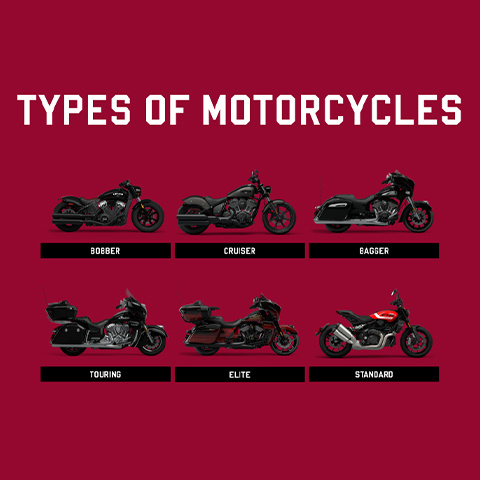The Of Motorcycle Boots
The Of Motorcycle Boots
Blog Article
The Buzz on Motorcycle Boots
Table of ContentsSee This Report on Motorcycle BootsThe Motorcycle Boots IdeasThe Single Strategy To Use For Motorcycle BootsAll about Motorcycle BootsMotorcycle Boots Things To Know Before You Get ThisRumored Buzz on Motorcycle Boots
Motorbike parts and systems for a motorcycle are engineered, made, and put together in order to create motorbike versions with the preferred efficiency, appearances, and price. The vital components of modern motorbikes are presented listed below. The chassis of a motorbike includes the frame and suspension, together with the front forks, of the vehicle.Carbon fibre, titanium, and magnesium are made use of in a couple of very pricey personalized frameworks. The frame includes the head tube that holds the front fork - motorcycle boots and permits it to pivot. Some bikes consist of the engine as a load-bearing stressed out member; this has been made use of all with motorbike history but is currently becoming more common.
It was commonly out of favor and generally regarded as a negative idea at the time. It has actually because gotten some cachet in the modern-day customized bike globe also due to the fact that of the space cost savings it can pay for and the reference to an earlier period.
Though any tank for fuel may be so called, the term is normally put on component of an engine system in which the gas is stored and pushed (fuel pump) or released (pressurized gas) right into an engine. A motorcycle fork is the portion of a motorcycle that holds the front wheel and permits one to steer.
How Motorcycle Boots can Save You Time, Stress, and Money.
The mix of rake and route figures out exactly how secure the bike is. motorcycle boots. The 'fork' on a motorbike includes numerous parts. The triple trees (additionally recognized as yokes) hold the fork tubes (which include the fork springs), and are fastened to the neck of the structure by the steering stem.

, which needs both lubrication and modification for elongation (stretch) that takes place through wear. The lubricating substance is subject to being tossed off the fast-moving chain and results in gunk and dust accumulation. Chains do weaken, and excessive wear on the front and rear sprockets can be dangerous.
Standard roller chain-drives endure the capacity for resonance, as the efficient span of activity in a chain and gear mix regularly changes during the change ("chordal activity"). If a drive gear revolves at continuous RPM, after that the chain (and the driven sprocket) needs to speed up and decelerate regularly. Most chain-driven motorcycles are fitted with a rubber bushed rear wheel center to eliminate this vibration issue.
These look these up chain oilers vary in sophistication, however all include substantially to the life of the chain. The custom-made of lubing by immersing the chain in a tin of warm oil stopped in the very early 1970s, as soon as most chains had rubber "O'-rings. The original Suzuki RE5 of 1975 featured a back chain oiler, however the 1976 version had a covered chain, and its oiler was erased as "unneeded".
The 2-Minute Rule for Motorcycle Boots
They are not as durable when subjected to high horsepower as a chain. You can not modify the size and adjustment last drive ratios as easily as chains. And require larger sheaves contrasted to chain sprockets to obtain a reliable final drive proportion.
Inside the this content bell real estate a bevel equipment on the shaft friends with one more on the wheel place. This plan is exceptional in terms of noise and sanitation and is basically maintenance-free, with the exception of occasional liquid changes.
The added gear collections are a source of power loss and added weight. Virtually all high-performance racing motorcycles make use of chain-drive since they are the most mechanically efficient transferring power to the rear wheel.

7 Easy Facts About Motorcycle Boots Shown
There are you could check here tires designed for dirt bikes, touring, sporting activity and cruiser bikes. Dust bike tires have knobbly, deep footsteps for maximum grasp on loosened dirt, mud, or gravel; such tires often tend to be much less steady and noisier on smooth surface areas.
Touring tires are normally made from a more difficult rubber substance for higher sturdiness, these may last much longer but often tend to provide less straight-out grip contrasted to sports tires at ideal operating temperature levels. Touring tires usually offer much more grip at lower temperatures and can be extra fit to riding in cool or winter months conditions where a sporting activity tire may never reach its ideal operating temperature level.
These have a tendency to have stronger sidewalls as they are commonly fitted to heavier equipments. Motorsport or competing tires use the highest possible of degrees of grasp. Because of the heats at which these tires typically run, use outside a racing atmosphere is unsafe, commonly these tires do not reach their optimum temperature level which provides much less than ideal grip.
What Does Motorcycle Boots Do?

This can cause brake dive. Brakes can either be drum or disc based, with disc brakes being a lot more usual on large, modern-day or extra expensive motorbikes for their far exceptional stopping power, especially in damp conditions. There are numerous brake-performance-enhancing aftermarket parts offered for the majority of motorbikes, consisting of brake pads of varying substances and steel-braided brake lines.
Report this page